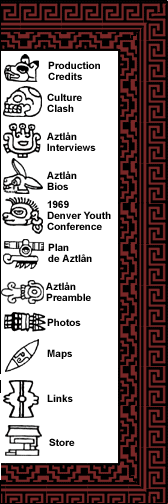

Q: Are the Fremont people named after John C. Fremont?
A: I don’t know that for a fact, but I’d be surprised if wasn’t.
Q: Who were the Fremont people?
A: The Fremont culture is a peculiar name that archeologists have given
to the Native American people who lived around the Great Salt Lake. And
in Utah. It’s not a Native American name, obviously. It’s probably
named for John Fremont, who was probably no great friend of the Native
American people. But that’s the name we use. It’s kind of an
odd name, too, because it covers a lot of different groups. It’s
just people that make pottery, grow corn, and live in things that look
like pueblos, in Utah. They’re all Fremont. Or, probably, that’s,
a score of different folks that would identify themselves as different
tribes. But people who are around the Great Salt Lake, who are what we
call Fremont, were part of the Southwestern sphere. They had the corn
and the beans and the squash, and a lot of the ideology that goes with
corn production, rainfall, that sort of thing. Made pottery that looked
very much like Southwestern, Pueblo pottery, lived in homes that looked
very much like Pueblos, only smaller. And were part of that larger sphere
of the Southwest. When Chaco was a capital is when Fremont really takes
off. And I don’t think that’s a coincidence.
Q: So there might have been some influence directly from some Chaco culture
to the Fremont people.
A: I wouldn’t be surprised if there was direct influence from Chaco
to the Fremont. They don’t have the roads, and they weren’t
part of that region, but they were on the fringes.
Q: If a people had lived on an island like the Fremont peoples back at
that time, would they likely have been fishermen?
A: I could look that up. Lots of the Southwestern groups don’t eat
fish. They live by rivers, but they will not eat fish. I don’t know
what the Fremont did.
Q: If you're looking for a lake that has an island, and the island has
caves, there is some areas of marsh, where we might find herons, in your
experience, having traveled throughout the Southwest, what are some of
the places that come to mind that might fit that bill?
A: The best candidate for a large lake with an island is [going to] be
the Great Salt Lake. Lakes that Pueblo people refer to as points of origin
are usually small, upland, mountain ponds, as much as anything else. I’m
not aware of too many lakes in the southwestern region that are big enough
to have an island that would be big enough to live on. Great Salt Lake
and that complex of lakes around it, are probably the best bet. I can't
think of any others.
Q: Could we just go back to Chaco Canyon for a moment. If you could just
once again reiterate the unlikely nature that Chaco Canyon Aztlán.
A: Chaco was probably not Aztlán. At least that would be the textbook,
archeological interpretation, and I think, probably, the Native American
Pueblo take on Chaco, that Chaco was a profoundly Puebloan place that
[it] was ancestral to the modern Pueblos of New Mexico and Arizona.
Q: Good. And the same thing for the Hohokam and Casa Grande.
A: Hohokam civilization of southern Arizona looks like it stayed in place,
and turned into the modern Piman people, or the Tohono O’odham people,
who refer to the Hohokam as their ancestors. And I think most archeologists
would agree that when Hohokam disappears archeologically, it doesn’t
really disappear, it just changes into the modern people who live there
now.
Q: Could you talk about the linkage between concepts like Teguayo and
Aztlán, and how they might be archetypal places of origin?
A: Teguayo and Aztlán both seem to be places where people emerge
from the Earth, or peoples, groups, emerge from the Earth, and I’m
not talking about the original creation of first man, first woman kind
of thing, but peoples emerge. And that’s a theme that shows up in
many many Southwestern and Native American cosmologies and histories.
They come up out of the Earth. They come from places often associated
with water, come from springs, come from caves, come from islands that
are surrounded by water. Water is part of that origin story, and coming
from a lower region, because water, a spring, comes from an earlier world.
Whether that’s a universal theme in the New World as opposed to the
Old World, or whether that’s specific to particular tribes, I don’t
know. And that’s an interesting question, whether that connection
between Southwest and Mexico could well be.
Teguayo and Aztlán are incredibly important examples of origin
histories that are told by many peoples [of] the New World and Mexico
and the Southwest. Whether these are individual histories where people
are linking themselves to places, is a good question. It’s one I
can’t answer.
| <<BACK |